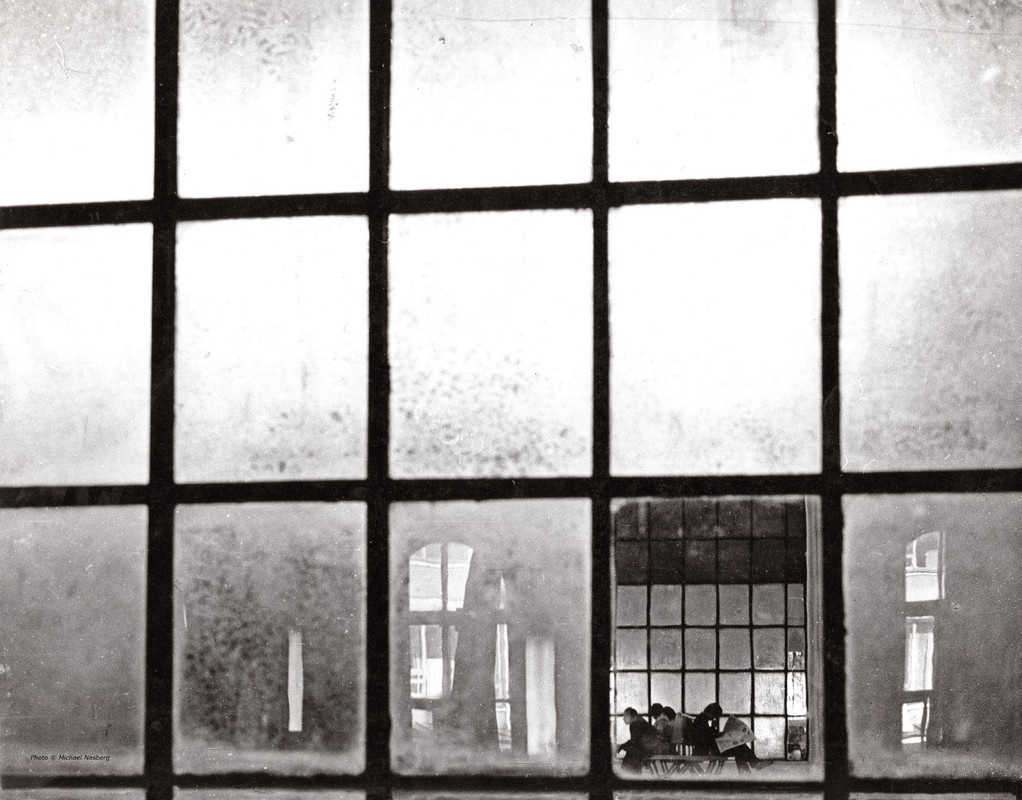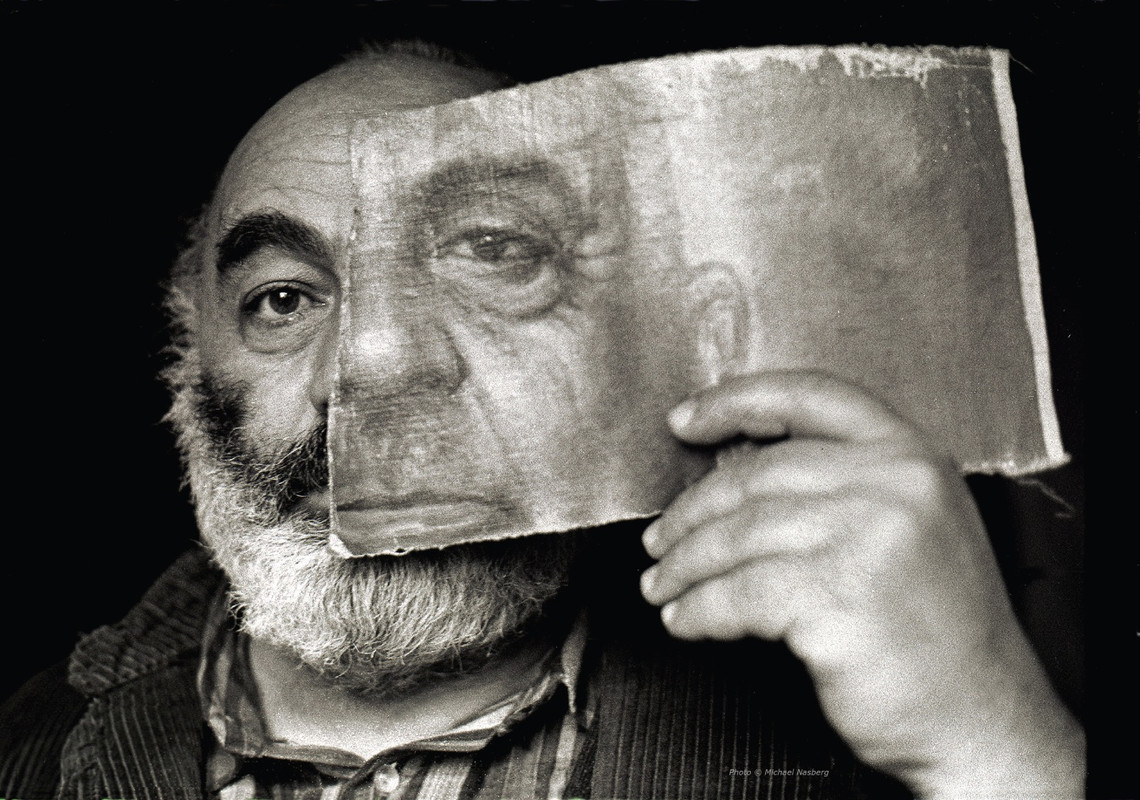Art
2024_2

"If you happened to be born in the war-torn city of Tbilisi in the late forties of the last century, you should expect anything from life because this city is a special place for an artist..." – This is how the award-winning photographer from Tbilisi, Michael Nasberg begins to tell his story.
After his birthday, January 22, 1947, many things happened in this city. The capital of one of the republics of the "Great Soviet Union" became the capital of independent Georgia. The water of Mtkvari flew, the city became more and more beautiful, the subway was opened, Nona Gaprindashvili became the world champion, and people saw how a man set foot on the moon from the silver screen. Yovanna sang “Tbiliso”, “The Beatles” visited America several times. Our “Orera” was succeeding in full swing... In the meantime, a large concert hall was opened in Vera District. It was preceded by the Sports Palace in the new district, Saburtalo. The city grew in population, buildings, and parks, just like other Soviet capitals, but it was still different from the others. Then, a war broke out, the governments got overthrown, the cart turned over, moral crossroads appeared, and spiritual values were reassessed... However, while this is happening, you can still test your abilities and find the work of your life. However, until you finally find out what you want and if what you want is truly yours?
On work and self-discovery
After many years of working and searching, he talks with a satisfied sadness and with such love that “his Tbilisi” will stand before your eyes, Nakhalovka, the uphill rising from the Malakni square. He spent the first twenty years of his life there, at the first number of Shirshov (the same as the second alley of the USSR, as if there were also the first alley of the USSR), he walked along this street first to the secondary school, then to the Polytechnic Institute.
A diverse community lived in this district of Tbilisi. Who wouldn’t you meet? There were people from scientific society, workers and employees, businessmen, idlers, and thieves “in” and “outside” of law...
"Our house was near the railway station. We lived on the second floor, and the balcony was on the side of the railway. There was a gate beyond which wagons full of prisoners often stopped. They were transferred from the train to locked cars and taken somewhere... Sometimes the opposite happened – they brought them by locked cars and sent them somewhere by wagons. This procedure was guarded by armed soldiers from both sides, accompanied by dogs. Me and my friends looked at this scene for years, which still stays vivid inside the memories."
During the student days, a boy with a guitar was often seen in the neighborhood. This was the time when the traditional guitar with a bow was replaced by the electric guitar. He was already popular in the neighborhood, and the colorful community greeted him with a smile. Where did the popularity come from? He proudly keeps a photo from a newspaper article in which he is on the stage of the Tbilisi Sports Palace with a guitar in his hand, to this day: "Can you imagine what a huge honor it is for a 20-year-old boy to become the face of the entire festival on the pages of the newspaper?!" This was when the young generation from all around the world talked a lot about Che Guevara and Carlos Puebla. “Hasta Siempre Comandante” is sung everywhere. When the counterculture of the 1960s was born, the underground set foot in Tbilisi. Pop rock, jazz-fusion, heavy rock, metal, soul, blues, country... they adore the Liverpool four, Rolling Stones, Pink Floyd, Led Zeppelin, Ray Charles, Marvin Gaye, Joan Baez... “Boogie-woogie” is replaced by “twist” and “rock and roll” brought by Chubby Checker... Woodstock is new, Janis Joplin is still on stage...
We formed a band together with a few friends who were passionate about music, we were very popular. At that time, a large part of the youth was fascinated by the Beatles and other Western groups. Our group performed the repertoire of the Beatles, Ray Charles, and other popular artists of the generation. I was offered to play the solo guitar in the orchestra of the Polytechnic Institute. It was a very famous orchestra which consisted of professional musicians. The orchestra was led by Soso Tughushi. I had to perform in many concert halls of Tbilisi with this orchestra. We had tours in Hungary and Czechoslovakia.
The performance on a solo guitar of Ray Charles’ two compositions in Ostankino’s New Year’s program, which was broadcast throughout the USSR, made him so famous that the Polytechnic Institute received many letters from different cities of the Soviet Union in his name.
He graduated from the institute in 1971. He worked as an engineer, and junior science worker at the Institute of Georgia’s Hydromechanics and Reclamation. He successfully defended his candidate’s dissertation. But... gradually, a new passion – photography – took up more and more space in his life.
A new profession and a brilliant friend
It was not just a passion or a hobby. Since 1977, the camera has been his inseparable companion. Since 1980, he was already cooperating with “Sakinform” and various magazines or newspapers that were being published in Georgia. He held his first personal photography exhibition in Tbilisi in 1981 at the "Merani" exhibition hall. In 1980, his photograph “In Strong Hands” won third place at the Tokyo World Photo Contest, and as a reward, together with the bronze medal, he received a “Nikon” camera from the organizer of the contest, “Nikon”.
During that time, several of his photos won in different countries around the world.
In 1979, he made a friend – Sergo Parajanov. The friendship lasted for years. During this period, a whole series of portraits of the great artist were created. It is difficult to get an agreement from an unconventional person for a photoshoot, but this process turned out to be interesting for both sides. It seems Parajanov saw a worthy partner and a different talent in him. Parajanov even left a note for him at his exhibition – “Your exhibition is a celebration! The photos are better than their titles, and try to “sneak” into the cinema!” This was a very big compliment from him.

In the prism of a captured moment, people are different. Often, the lens reveals people in a way that they don’t even know themselves as such.
Parajanov with a magnifier, a piece of glass, a mirror, a socked foot on a plate, a red turban, alone or in the company of ladies, Parajanov on his balcony... This is not a photoshoot, but a kind of game – a two-way interaction between the photographer and the subject.
“He was extraordinary and very direct; he would share his thoughts directly. I addressed him as Sergei Iosifovich. He always addressed me formally. Tbilisi had a great impact on him, just like me. This city has a special artistic atmosphere; it is a city of talented people. The atmosphere of Tbilisi created Parajanov the way he was.”
Departure
In 1992, he moved to Sweden together with his mother, wife, and two children. The first years were full of difficulties – a new country, a new language, a new way of life, new people – but he always had his camera ready by his side.
His life was split into two parts: before and after 1992.
“Our whole family left Georgia in 1992, when, at some point in this amazingly tolerant country, nationalities began to be distinguished.
I had friends of all nationalities in Tbilisi. At that time, no one was interested in each other’s ethnicities; we were from Tbilisi. The feeling of this city follows me to this day. Many friends left Tbilisi; but many remained...”
However, he still returns to Tbilisi from time to time. In 2013, a large exhibition was held at the Tbilisi History Museum in Karvasla, where 50 photos were presented.
There was hardly a day without a camera. He takes photos all the time, and not just in Sweden. He travels and participates in contests and exhibitions in different countries around the world.